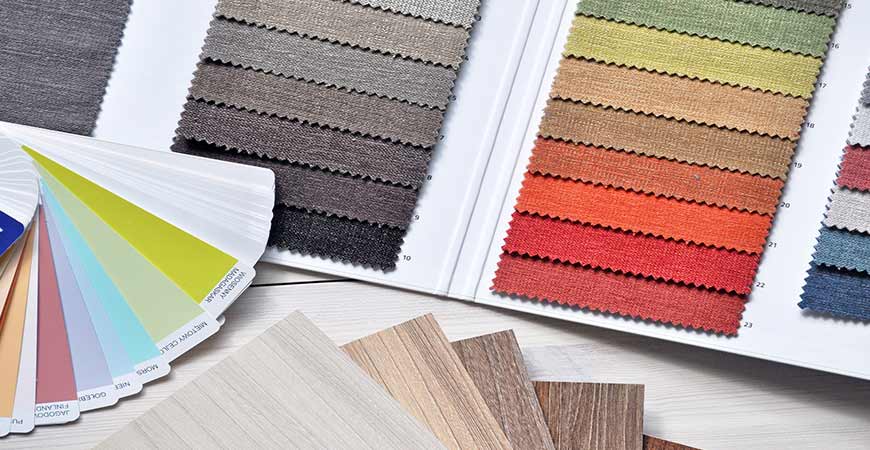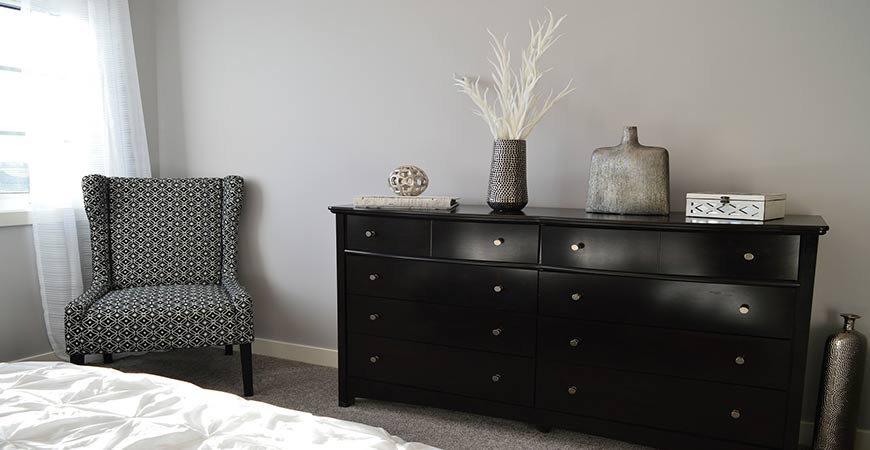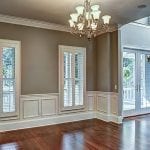
Change the Color Scheme in Your Home
If you’re looking to upgrade the look of your home, adding fresh paint to the walls is a great place to start. There are many schemes when it comes to choosing a new color palette. Don’t be overwhelmed; picking new color schemes is easier than you think.
Follow these simple tips to find a color scheme that is right for you.
60-30-10 Rule
Start by using the simple 60-30-10 decorating rule. When selecting colors for a room, divide the space and dedicate 60% to a dominant color, 30% to a secondary color, and 10% to an accent color.
This method helps to create balance within any room. The 60% color anchors the room and provides a strong background for the rest of the area.
The 30% color is a secondary color that supports the main color while adding dimension. Express the secondary color with the furniture, rugs, or draperies.
The last 10% is an accent color, which you can represent with throw pillows, artwork, or a smaller decorative piece. Keep the room’s focus on the wall color, give some attention to secondary objects, and follow everything up with an accent piece.
Make picking out a color scheme easy by using the 60-30-10 rule.
Stick to What You Love
If you’re unsure of where to start, you can try picking a color you already know you love and work from there. You’ll enjoy the room if it is inspired by a color that you want to look at every day.
If you find yourself choosing the same color over and over again for pieces around the house, why not make that color the center of attention?
Choose a Focal Point
Choose a piece of furniture, artwork, or a rug to be the focal point of the room and base the other colors around that object. This will help create a cohesive look throughout the space.
Draw color inspiration from the centerpiece of the area. Display the item in a clearly visible part of the room so that the object is the main focal point within the space.
When picking a wall color from a piece of artwork, try selecting a color palette that a couple of shades lighter to make sure the art still stands out.
Try Before You Buy
Another great tip to help ensure that you’ve made the best decision is to “live” with a color palette before fully committing to it. Whether that means hanging a paint swatch on the wall or placing an upholstery sample in the room for a few days.
It is a good idea to see if you still like color after a few days. Colors and fabrics can look different in natural light during the day compared to artificial light in the evening. Pay attention to what the colors look like at various times throughout the day.
Pull from a Pattern
To pick the best shades for your color scheme, take the colors from the largest pattern you see in the room. Use those colors and incorporate them throughout the space. It is a reliable option to use color combinations that you find in upholstery, window treatments, and linens.
These color combinations are composed of professional designers. If you’re having trouble deciding on a color scheme, using a pre-made color scheme is an easy way to decide on what suits your room the best.
Use the Color Wheel
There are two approaches when it comes to using the color wheel to choose a color scheme. You can go for a complementary color scheme, and pick colors that are on opposite sides of the color wheel.
Blue and yellow, red and green, and purple and orange are all colors that are examples of complementary colors. When you look at a color wheel you will see they are all the opposites of each other. Complementary color schemes present a bold contrast of colors.
The living room or dining room is a great place to use complementary color schemes because these areas are considered the more formal areas of a home. Complementary color schemes should be used in areas that are more likely to be used for formal hosting.
The second method is to use an analogous color scheme instead of a complementary palette. Analogous colors are next to each other on the color wheel. Analogous colors are the opposite of complementary ones.
Yellow and green, blue and violet, and red and orange are analogous color combinations. Analogous color schemes create a more relaxed feeling and are often used in the informal areas of a house. The casual tone of an analogous color palette work well in bedrooms, dens, and family rooms.
For more helpful tips on adding new color to your home, click here. For more information on how to create and choose the best color scheme, click here.
Stop by our website to learn more about our easy solutions to everyday problems, so you can spend less time cleaning and more time decorating!
















